

First femtoscopy results at LHC
|
|
J. Pluta, Warsaw University of Technology |
|
1. Lessons from heavy ion collisions at RHIC
Pion Interferometry in
Au+Au and Cu+Cu Collisions at RHIC; sqrt (sNN)=64.2
and 200 GeV
By STAR Collaboration (B.I.
Abelev et al.). Mar 2009. 12pp.
Published in Phys.Rev.C80:024905,2009.
e-Print: arXiv:0903.1296 [nucl-ex]
![]()
Correlation functions
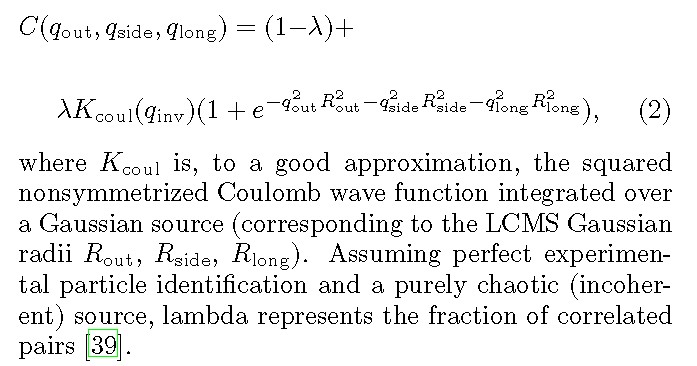
![]()
Results: CMS energy, mt, and centrality dependence, I
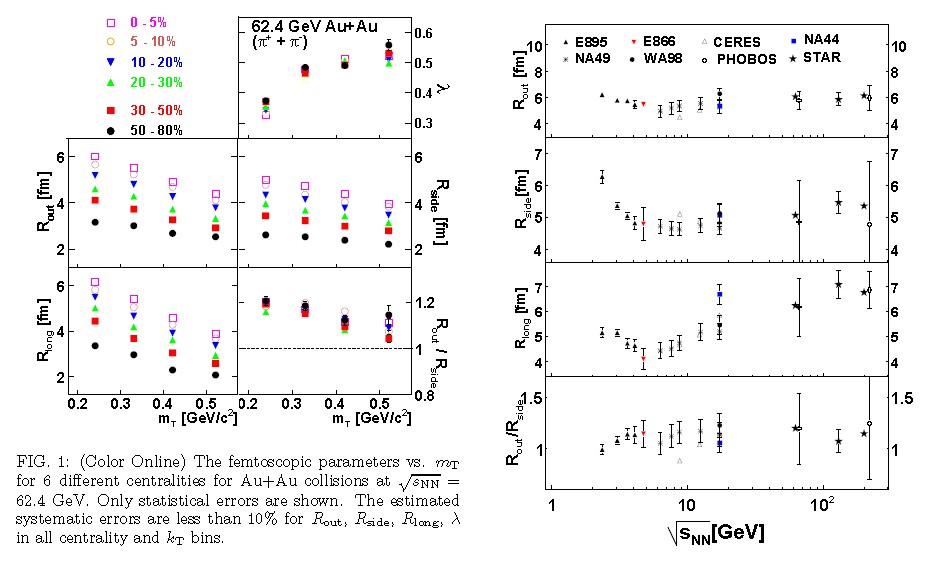
![]()
Results: mt, and centrality dependence, II
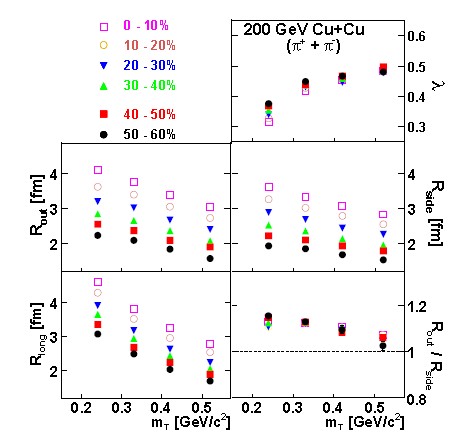 |
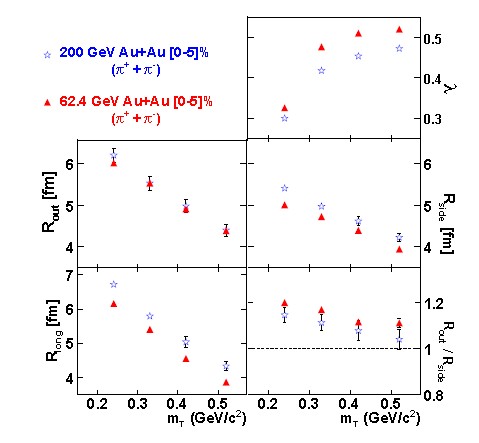 |
Results: freeze-out volume and mean free pat
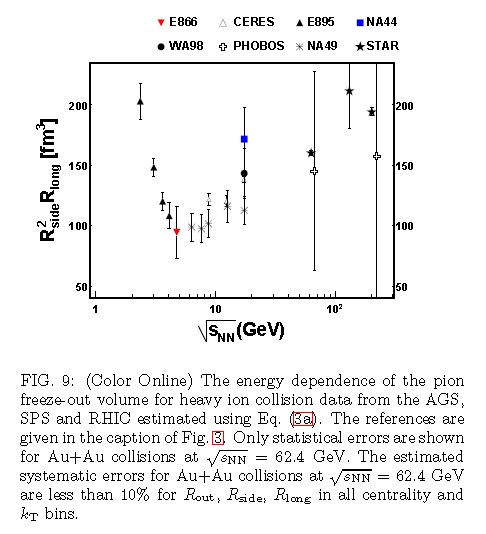 |
 |
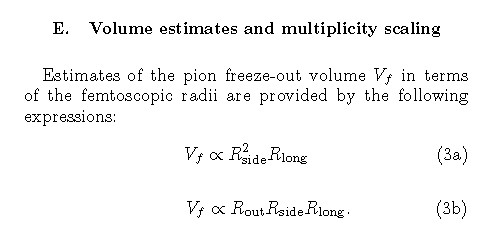 |
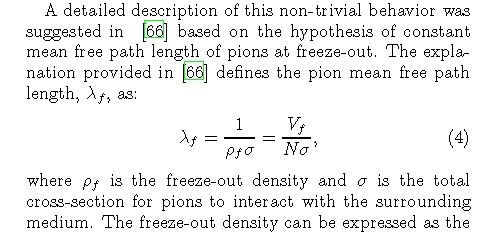 |
Results: particle multiplicity dependence
|
|
|
RHIC conlusions (I.)
1. femtoscopic radii increases with collision centrality
2. femtoscopic radii decreases with mt (expansion)
3. Freeze-out wolume show linear dependence on particle multiplicity
3a Universal mean free path length at freeze-out
Pion femtoscopy in p+p collisionsat sqrt(s)=200 GeVarXiv:1004.0925v2 10 Apr. 2010
RHIC Conclusion (II.): very similar mt and multiplicity scaling in p+p and A+A collisions
|
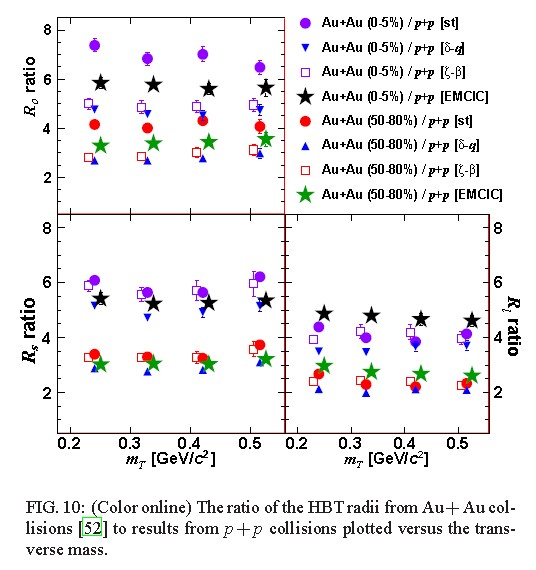 |
![]()
LHC
![]()
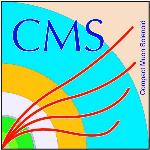 |
|
![]()
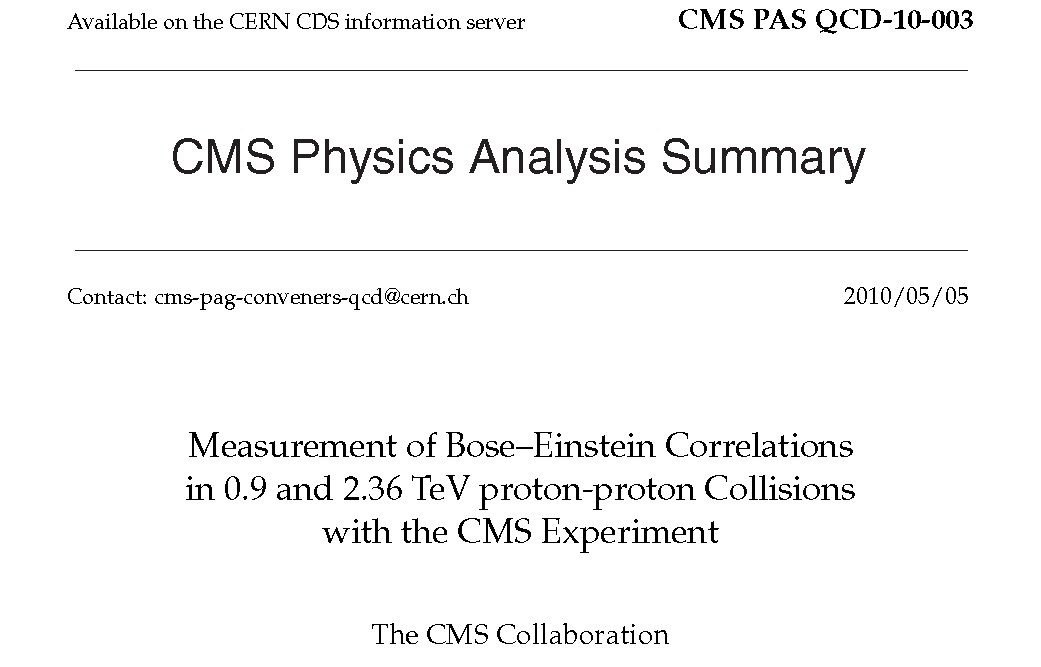
![]()
Basic definitions
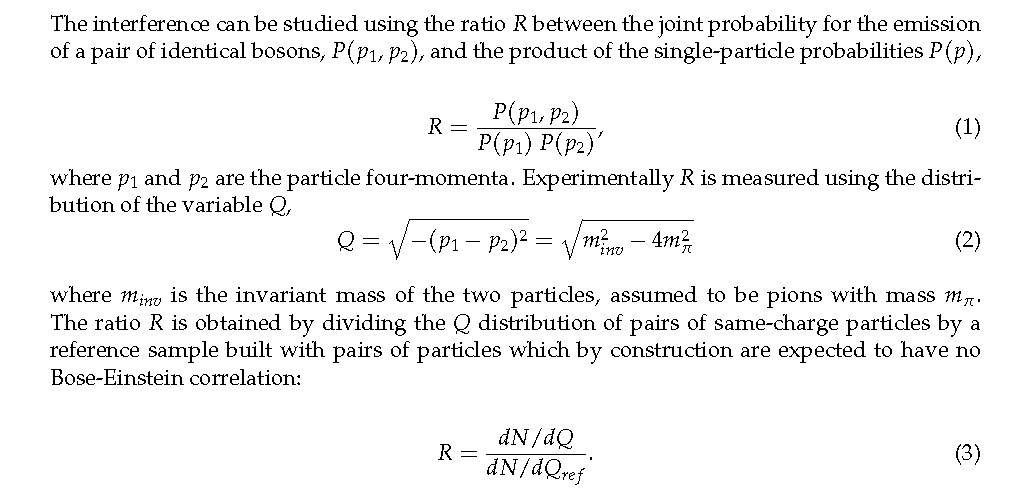
![]()
Parameters

![]()

![]()
![]()
Statistics

![]()
Coulomb correction

![]()
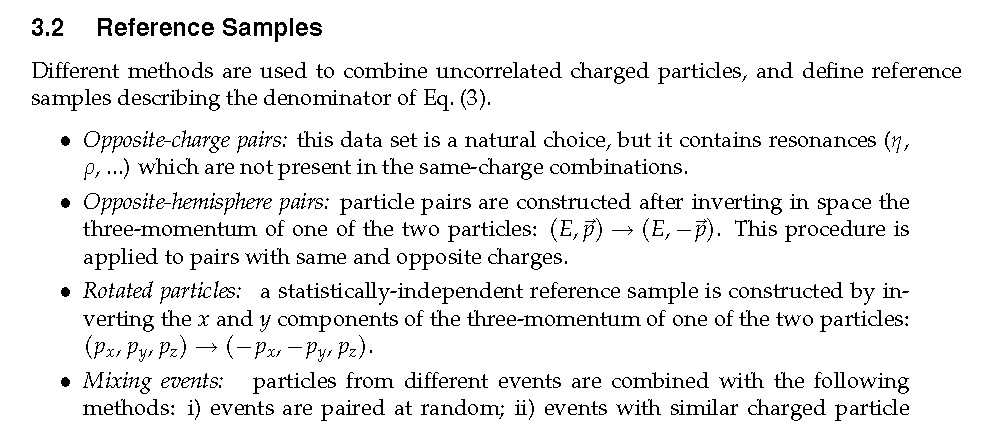
![]()
Two examples
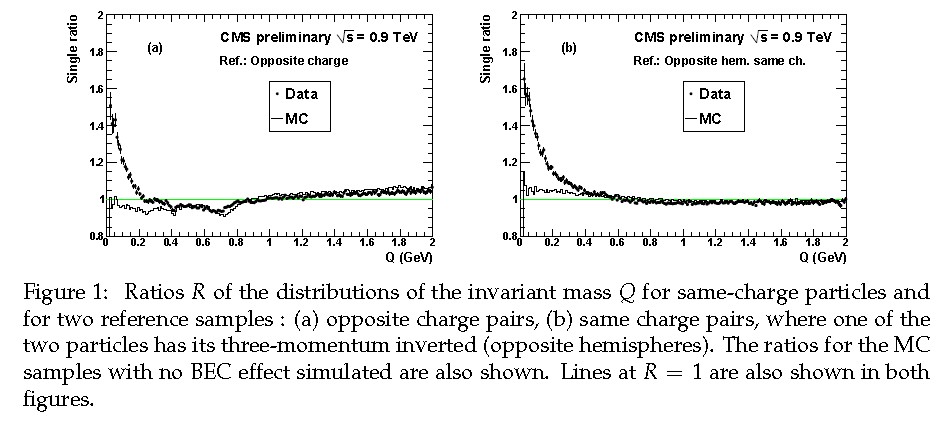
![]()
Double ratio

![]()
Results
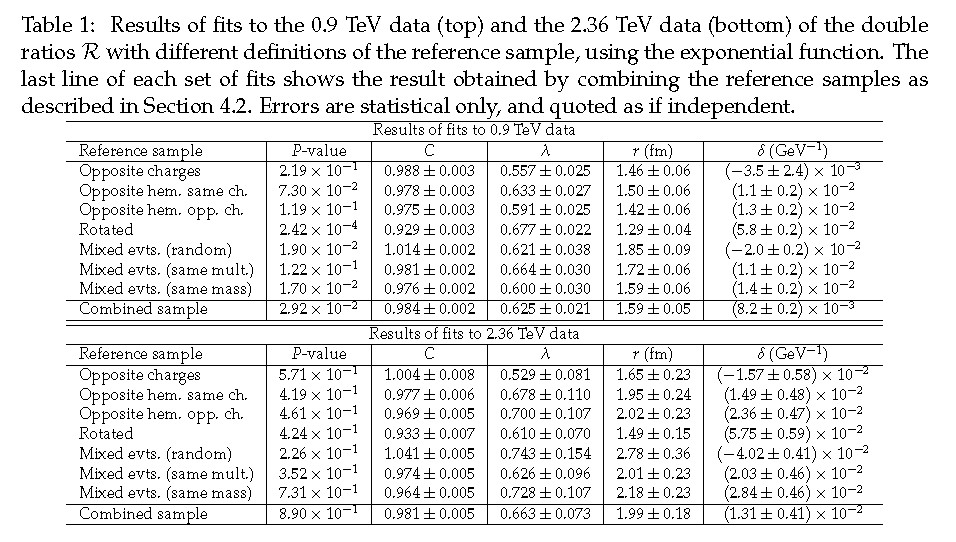
![]()
Correlation functions
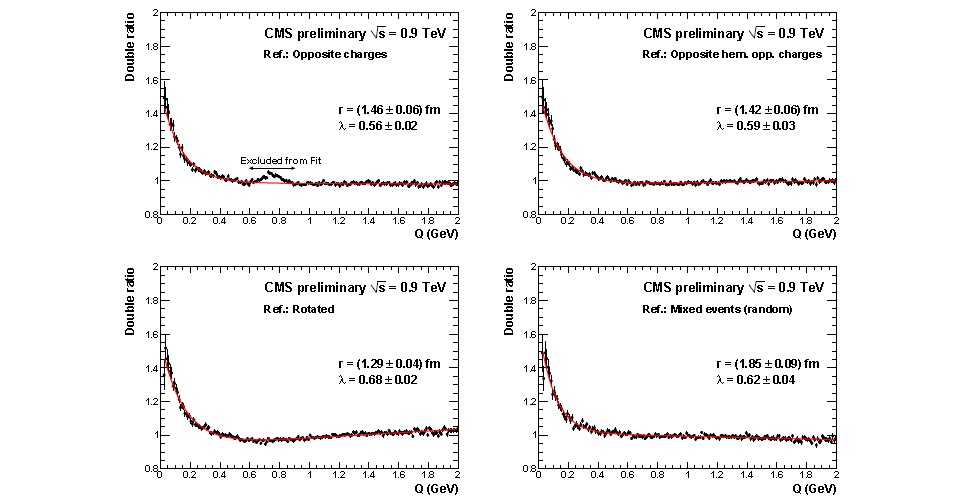
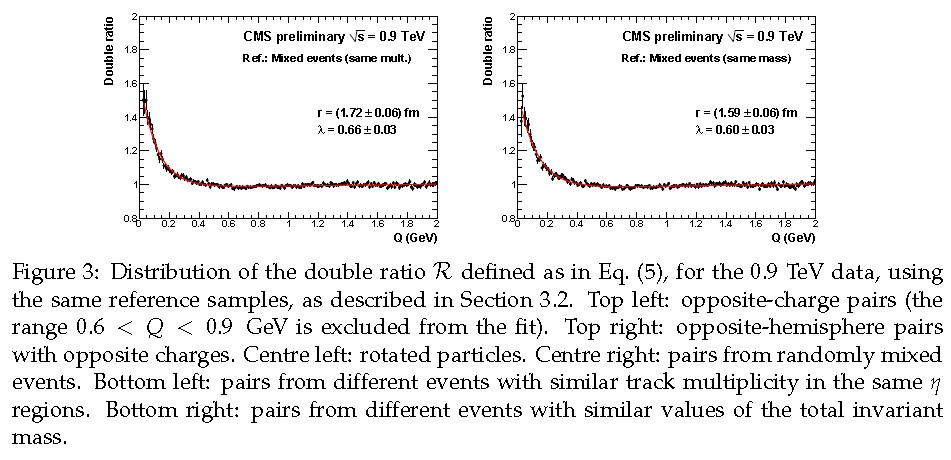
![]()
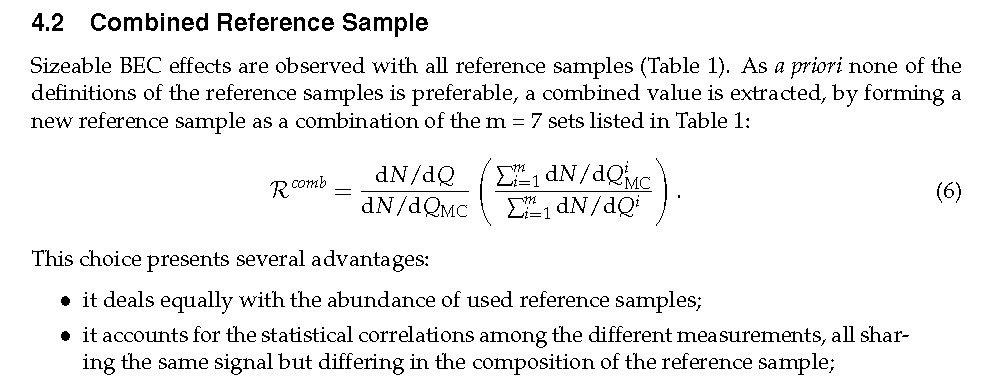
![]()
Exponential and Gaussian fitting
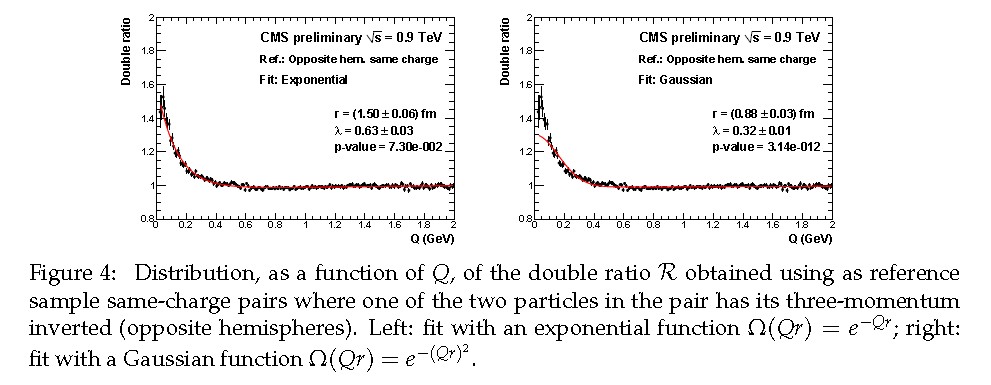
![]()
Exponential fits for two energies

![]()
Values and errors

![]()

![]()
Correlation functions for different charged-particle multiplicity

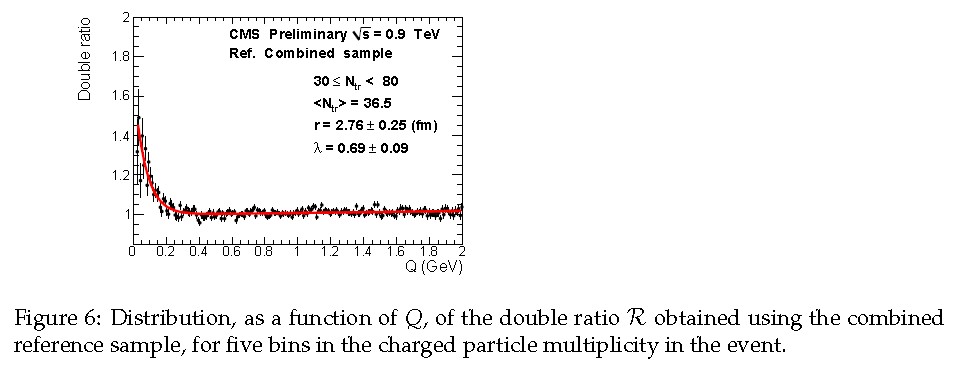
![]()
Charged-particle multiplicity dependence
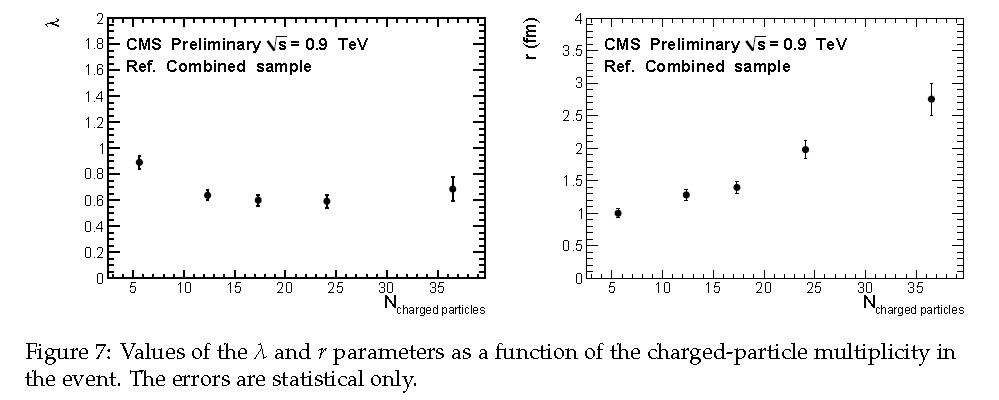
![]()
Charged-particle multiplicity dependence

![]()

![]()
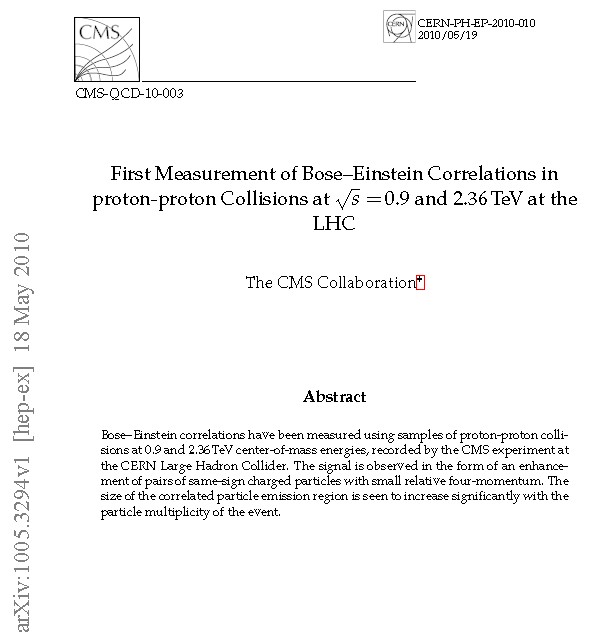
![]()
 |
Fi rFirst results on particle correlations from ALICE
Dariusz Miskowiec, Particle correlations in ALICE, Physics at the LHC, Hamburg, 10-Jun-2010
|
![]()
Proton-proton correlations, by Piotr Ostrowski
![]()
